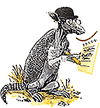
Question by Frontier Reporter, Mid-March, 1868:
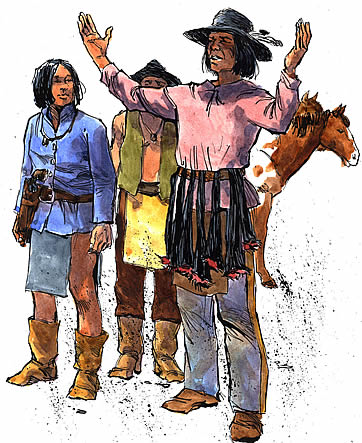
Pardon me, Chief, what's going on here at the Tonkawa Village?
Tonkawa Scout Johnson answers:
Big dance tonight! Big fire, dancing. Big war victory! See? (He points to bloody scalps hanging from his belt.) I am Tonkawa Scout Johnson, Indian scout. Got soldier gun. Got soldier hat. Find many bad Indian for white man. Comanche, bad Indian, kill many Tonkawa. Make my heart hot, want to make it even.
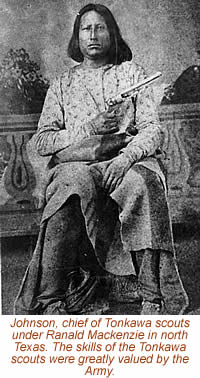
White soldier chief say many Comanche attack Ledbetter salt works, scare white man. White soldier chief want Johnson to find bad Comanche, keep him off Salt Creek Trail for good. Johnson take many white man, follow trail, find bad Comanche.
Johnson see smoke go up from canyon, see bad Indian track on trail ahead. Tell white man, wait here with horse. Johnson crawl up hill, hear heap Comanche talk, see Comanche sit by fire.
Johnson tell white man, come back in night, wait for moon. White Chief Turner say white man wait, come down on bad Indian like big wind. Johnson, white man, all wait. No fire. No sleep. Wait for moon.
Johnson go first, then white man, crawl up on bad Indian. Shoot guns, heap noise. Big fight, kill many bad Indian. White man happy, Tonkawa happy. White man go back to fort. Tonkawa take many bad Indian scalp, big victory.
Sun want to go down now, then heap dancing. Old warrior make drum sing. Johnson pretty big man, pretty brave warrior. Dance around fire tonight, smoke pipe. Tonkawa Scout Johnson kill many old enemy, make Tonkawa happy.
The groups of Indians that became known as the Tonkawa moved into the area that is now Texas during the mid-1700s. They later became friends of American settlers and scouts and warriors for the U.S. military, helping to fight the Comanche and other tribes. In spite of the help the Tonkawa gave to the soldiers and settlers, the Tonkawa were forced to move to Indian Territory, north of Texas. There, in 1862, about half of the 300 remaining Tonkawa were killed by members of other tribes. The desperate Tonkawa survivors were allowed to moved back to Texas and set up a small village near Fort Griffin, where they again served as scouts for the Army. After the war, they were moved back to Indian Territory. By 1890, there were only 56 Tonkawa surviving.
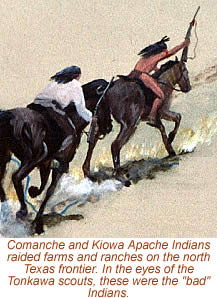
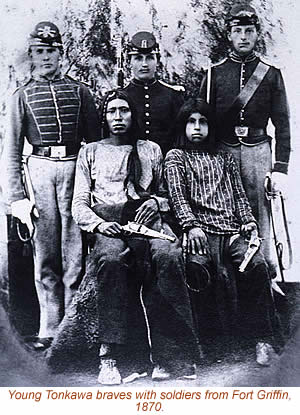
Credits and sources: Character dialogue by Lisa Waller Rogers; top illustration by Charles Shaw; photo of Chief Johnson courtesy of Lawrence Jones, III; painting of Comanche and Kiowa raiders from mural by Nola Davis at Fort Richardson SHS, courtesy of TPWD; Tonkawa braves and soldiers at Fort Griffin, courtesy Fort Griffin SHS, TPWD.
